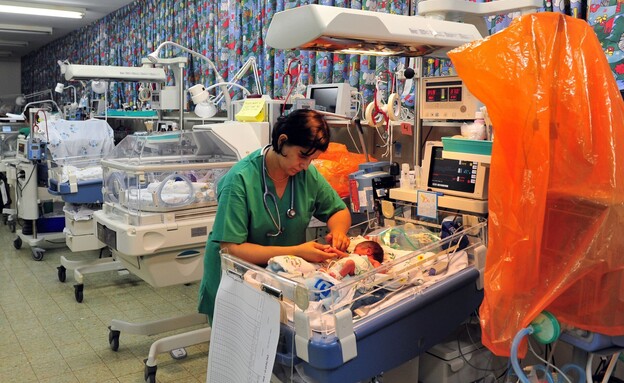According to him, although in a community setting there is no test that can confirm that it is indeed a viral disease and not a bacterial disease, the treating doctors know how to diagnose the baby during a routine examination and when necessary – offer antibiotic treatment.
According to him, despite the fact that many parents are frustrated that the baby suffers from a disturbing cold, in practice there is no significant treatment that can be offered in the case of a viral disease. “I can certainly understand the parents’ frustration, because it is unpleasant to see a child with a fever, who seems to be suffering, drooling and coughing; but antibiotic treatment is only appropriate in cases where it is a bacterial disease. As soon as it is a viral disease, there is no relevant treatment except for supportive treatment that includes rest, drinking and giving painkillers to reduce fever as needed.”
According to him, there are different viruses that can cause viral pneumonia: “Influenza, for example, is a virus that, among other things, causes a lot of bronchiolitis, although it is not clear what the viruses are that cause pneumonia now that the flu is not yet in full swing.” In any case, he again reminded parents of the importance of getting vaccinated against the virus – “A flu vaccine reduces the risk of getting sick and reduces the chance of complications from the disease by about 50% – this is certainly quite a lot. In the end, this is a disease that can cause unpleasant morbidity and it can certainly be avoided in cases many through vaccination”.
By the way, he points out that inhalation is a tool that many parents are quick to use to relieve the baby, but in practice it is not recommended unless it is children suffering from asthma. “When it comes to children with a background of asthma, it may help to treat the asthmatic component that worsens the symptoms, but I do not recommend the use of inhalation in the case of viral pneumonia in healthy children because it has not been proven to be an effective measure.
The disease is common among babies up to the age of 18 months
Dr. Shani Peled, a hematological internist and specialist in pediatrics at Maccabi Health Services North District, supports the claims. According to her, in recent weeks there has been an increase in respiratory morbidity in children: “This is manifested, among other things, in what is known as a ‘cold,’ which usually means a viral disease in the respiratory tract the upper, and also in lung infections which are sometimes a complication of a viral disease, and sometimes it is a primary disease – viral or bacterial. Most of the morbidity is viral, although we also see bacterial pneumonia, typical and atypical, at a slightly higher rate than in the past.” According to her, in some cases antibiotic treatment is also required, and rarely even hospitalization.
Dr. Einat Yaakovovich, director of the field of pediatrics at the Central District United, says that this year she sees more children suffering from viral pneumonia. “It happens relatively early compared to previous years, since the disease usually breaks out in the winter. Today, hospital wards are full of sick children. The disease is mostly common in babies from birth to 18 months, and at these ages the symptoms of the disease are more severe.” She warns that failure to diagnose in time may lead to severe respiratory aggravation to the point of respiratory arrest in small children, so it is very important that parents be vigilant.
Dr. Diti Mekens, pediatrics coordinator of the general in the Dan-Pat district, also notes that she is witnessing an increase in the cases of viral and bacterial pneumonia in babies, at the same time as a general increase in respiratory diseases.
When to go to the doctor?
It is difficult for us parents to distinguish when it is a viral pneumonia and an accurate diagnosis of the disease is only carried out in the hospitals. However, according to Dr. Jacobovitch, there are several warning signs that parents can pay attention to when the child is not feeling well: restlessness, annoying cough, difficulty sleeping, decreased appetite and difficulty eating. “These symptoms can be accompanied by fever as well as without fever” , she notes. “When a parent notices one or more of these symptoms, they should go to the pediatrician in order to diagnose if it is pneumonia. The doctor will examine extreme shortness of breath, use of auxiliary muscles and a decrease in oxygen levels, in which case he can refer for further investigation at a hospital.”
Dr. Peled adds that children with underlying respiratory diseases (such as asthma, for example) or when a child suffers from multiple vomiting, sleepiness or considerable restlessness, and in general – in any case where the parents feel that this is an atypical situation, it is important to go get tested. “Of course it is important to pay attention to Performing the routine vaccinations with a drop of milk and it is highly recommended to get vaccinated against the flu as well,” she says at the end.
